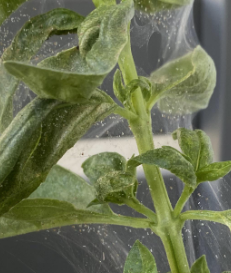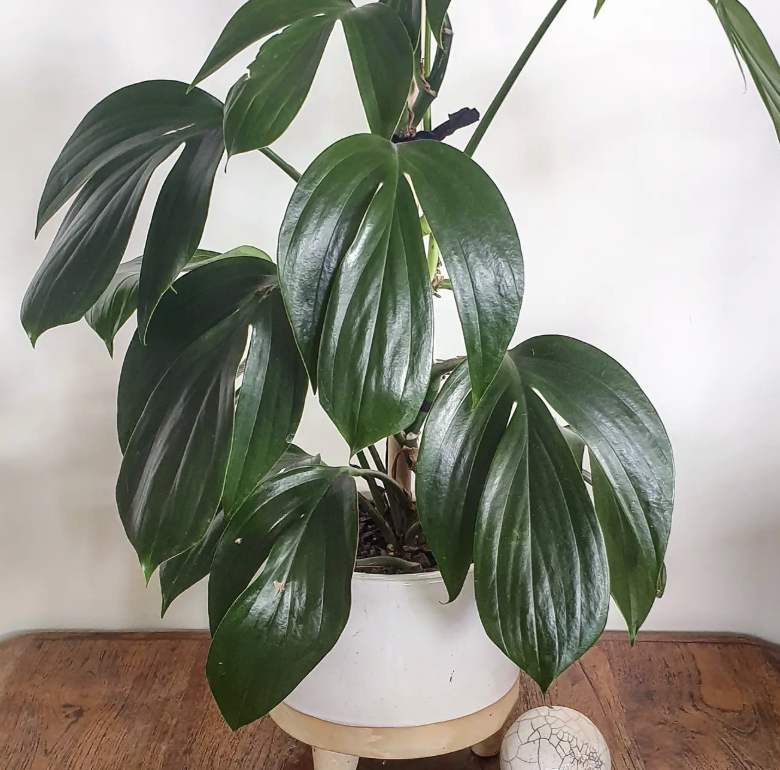The dragon tail plant is one of the best things you can add to your indoor space.
With its glossy, arrow-shaped leaves and unique climbing habits, it’s no wonder this tropical plant is a plant addict’s popular choice.
Whether you’re a seasoned plant lover or a beginner looking for a low-maintenance plant, the dragon tail plant is a fantastic option.
It not only enhances your living space with lush foliage but is also quite forgiving if you’re still figuring out your plant care routine.
The name “dragon tail plant” refers to its striking leaves, which resemble the elegant curves of a dragon’s tail.
Scientifically, this plant is known as Epipremnum pinnatum, although it is often confused with the similar-looking Rhaphidophora decursiva or “dragon tail philodendron.” Regardless of the name, its beauty and adaptability make it a must-have for any indoor garden.
How to Identify a Dragon Tail Plant
Identifying a dragon tail plant is easy once you know what to look for. In its juvenile form, the plant has smaller, heart-shaped leaves. As it matures, the leaves grow larger and take on a more arrow-shaped or split form, showcasing a glossy finish. These changes are part of the plant’s natural progression and are influenced by its environment, like light and support.
The plant’s aerial roots help it climb surfaces like a moss pole or wall, giving it an impressive vertical appearance. Mature leaves can grow to several inches long, adding a bold statement to your indoor space.
Size
The dragon tail plant can grow several feet tall as a climbing plant or trail gracefully from a hanging basket. With the right conditions and support, its aerial roots will help it reach its full potential. Indoors, it typically grows 3-6 feet, though in its natural habitat, it can grow much larger.
Light Requirements
For best results, place your dragon tail plant in bright, indirect light. It can tolerate low light and even partial shade, but its growth may slow, and the leaves might not develop their characteristic splits. Avoid direct sunlight, which can scorch the glossy leaves. If you’re noticing yellow leaves, it could mean the plant isn’t getting enough light.
Watering Schedule
Stick to a consistent watering schedule for healthy growth. Check the top inch of the soil; if it feels dry, it’s time to water. Be cautious of excess water, which can lead to root rot. During the warmer months, you might need to water more frequently, while in the winter months, reduce watering.
Temperature
This tropical plant thrives in temperatures between 65-85°F. Keeping it within this range mimics its natural habitat and promotes healthy growth. Avoid exposing it to drafts or sudden temperature changes, which can stress the plant.
Humidity
The dragon tail plant prefers a humid environment, ideally between 50-70%. Use a pebble tray, humidifier, or place it in a naturally humid area like a bathroom to maintain the right conditions. High humidity supports lush foliage and reduces the risk of leaf browning or curling.
Soil
Choose a well-draining indoor potting mix enriched with organic matter. The soil should retain some moisture but not stay soggy. Proper drainage is crucial; ensure the pot has drainage holes to prevent water from pooling at the bottom of the container.
Fertilizer
During the growing season (spring and summer), feed your plant every 4-6 weeks with a balanced liquid fertilizer. This will support new growth and keep the leaves vibrant. Skip fertilizing during the winter months when growth slows.
Potting and Repotting
Repot your dragon tail plant every 1-2 years or when the root ball outgrows the pot. Use fresh potting mix and a new pot slightly larger than the current one. A nursery pot placed in a decorative pot works well for both function and style.
Pruning
Regular pruning encourages new growth and keeps the plant looking tidy. Use sterile pruners to trim back lower leaves or overgrown vines. Prune in early spring before the active growing season begins.
Propagation
Propagating your dragon tail plant is simple and highly rewarding. Follow these steps to create new plants:
1. Preparing Your Cutting
Use clean, sterile pruners to cut a healthy vine with 2-3 leaves and at least one node. The node is where roots will form, so make sure it is included in the cutting.
2. Rooting in Water
Place the cutting in a glass of water, ensuring the node is submerged but keeping the leaves above water. Place it in a spot with indirect sunlight, and change the water every few days to prevent bacterial growth.
3. Planting in Soil
Once well-formed roots appear (usually after 2-4 weeks), transfer the cutting into a pot with well-draining indoor potting mix. Keep the soil moist but not soggy during this transition period.
4. Caring for New Growth
Place the new plant in humid conditions and provide plenty of light to encourage healthy growth. Watch for new leaves as a sign that the plant is thriving.
Common Pests

Spider mites, fungus gnats, and other common pests can occasionally affect your dragon tail plant. Use natural pest control methods, like wiping leaves with a damp cloth, or treat infestations with insecticidal soap.
Diseases
- Root Rot: Caused by overwatering or poor drainage.
- Leaf Spot: Yellow or brown spots from bacterial or fungal infections. Trim infected leaves and improve air circulation.
- Powdery Mildew: A white powdery coating on leaves, often due to high humidity and poor ventilation. Treat with fungicide.
Is It Toxic?

Yes, the dragon tail plant is toxic to pets and humans if ingested. Its sap contains calcium oxalate crystals, which can irritate the skin and mouth. Keep it out of reach of pets and children.
Common Issues
- Yellow Leaves: Often a sign of overwatering or insufficient light.
- Leggy Growth: Not enough light; move it to a brighter spot.
- Drooping Leaves: Could indicate underwatering or root issues.
Difficulty Level
The dragon tail plant is a low-maintenance plant and great for beginners. With the right balance of light, water, and humidity, it’s hard to go wrong.
Commonly Asked Questions
Why is my dragon tail not growing leaves?
If your dragon tail plant isn’t producing new leaves, it might not be receiving enough light or proper nutrients. Ensure it’s in a spot with bright, indirect sunlight and feed it with a balanced liquid fertilizer during the growing season.
How can I tell if my plant needs more light?
Signs of insufficient light include leggy growth, smaller or fewer leaves, and loss of vibrant green color. Move your plant closer to a source of bright, indirect light for better growth.
How do I know when to water my plant?
Check the top inch of the soil with your finger. If it feels dry, it’s time to water. During warmer months, you’ll likely need to water more frequently than in the cooler seasons.
When should I prune my plant?
Prune your dragon tail plant in early spring before the growing season. Use sterile pruners to remove dead or overgrown vines, which will encourage new growth.
Final Thoughts
The dragon tail plant is a stunning addition to any living space. Its adaptable nature and striking appearance make it an ideal house plant for beginners and experts alike.
With a bit of attention to light, water, and humidity, you’ll enjoy a thriving, lush plant that adds life to your home.

